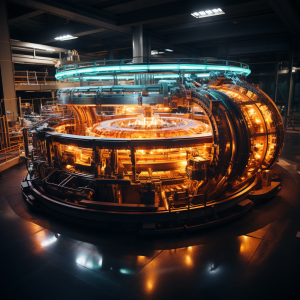
Conservation of Energy
The conservation of energy is one of the most fundamental concepts in physics, underpinning our understanding of the physical universe. It is a principle that states that the total amount of energy in an isolated system remains constant over time, a quantity which is conserved. In simpler terms, energy cannot be created or destroyed; it can only be transferred or changed from one form to another.
The idea of the conservation of energy initially stemmed from observations in mechanical systems. Scientists and philosophers noted that in many physical situations, the total energy, when accounting for kinetic (movement) and potential (stored) energy, remained constant. This principle of conserving mechanical energy came to be known as the law of conservation of energy.
This principle expanded with the development of thermodynamics in the 19th century. The first law of thermodynamics, which is essentially an expression of the conservation of energy principle, states that the change in internal energy of a system is equal to the heat added to the system minus the work done by the system. In a nutshell, energy can change from a thermal form to mechanical and vice versa, but the total energy remains constant.
By the late 19th and early 20th centuries, further developments in physics resulted in a broader and deeper understanding of energy. The most profound shift came from Albert Einstein’s theory of relativity, encapsulated in the famous equation E=mc^2. This equation implies that mass itself is a form of energy, and can be converted to other forms of energy, and vice versa. Even here, however, the conservation of energy holds: the total energy, including mass-energy, remains constant in all interactions.
Quantum mechanics, the other key pillar of modern physics, also obeys the conservation of energy. Each quantum state of a system has a certain energy associated with it, and the transitions between these states involve the absorption or emission of energy in the form of particles like photons. Despite the peculiarities of quantum mechanics, the total energy remains constant, though it may be distributed in novel ways.
In practical applications, the conservation of energy principle is key to analyzing many physical and engineering problems. For instance, engineers design heat engines based on the principles of thermodynamics and energy conservation. Similarly, electric power generation and transmission depend on the conservation of energy, where mechanical or thermal energy is converted into electrical energy and vice versa.
In environmental science and policy, the principle of conservation of energy is crucial for understanding the energy balance of the Earth and the impacts of human activity on climate. It also informs strategies for sustainable energy use, since it implies we can’t get out more energy than we put into any process.
In particle physics, too, the conservation of energy guides researchers as they track the transformations and interactions of subatomic particles. For instance, in a nuclear reaction, the total energy before and after the reaction (including the mass-energy of the particles and any emitted radiation) must balance.
In cosmology, the conservation of energy is more subtle due to the influence of general relativity and the expanding universe. Locally – within small enough regions of space where the structure of spacetime is essentially flat – the conservation of energy holds in the conventional sense. But on the scale of the universe as a whole, energy conservation is a more complex issue and is the topic of ongoing research and debate.
In conclusion, the principle of energy conservation is a fundamental and unifying concept in physics. It is a guiding principle that helps physicists make sense of the complex interactions and transformations that happen in the physical world, from the smallest particles to the largest cosmic scales. Despite the many different forms that energy can take, the total energy remains constant, a testament to the deep symmetry and order underlying our universe.




